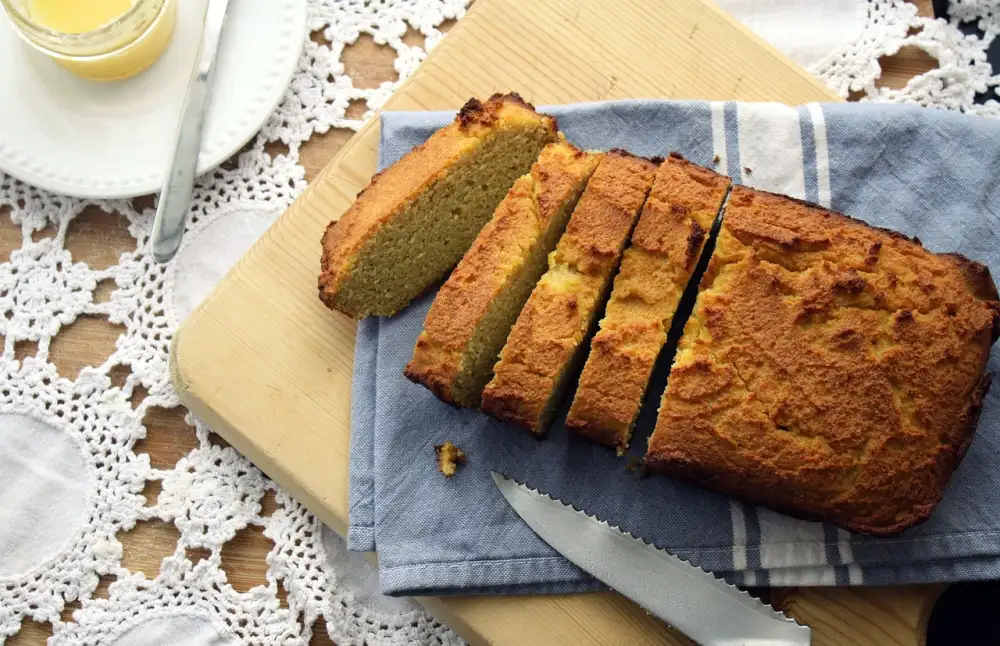Unleash Your Culinary Creativity with Gluten-Free Flour: A Healthier Alternative for Delicious Delights

- What is gluten and why is it a concern for some people?
- Understanding the benefits of gluten-free flour
- Different types of gluten-free flours available in the market
- Tips for using gluten-free flour in baking and cooking
- Exploring the nutritional value of gluten-free flour
- Addressing common misconceptions about gluten-free flour
Gluten-free flour has gained popularity in recent years as a healthier alternative for those who have gluten sensitivities or choose to follow a gluten-free diet. It is a type of flour that does not contain gluten, which is a protein found in wheat, barley, and rye. Gluten gives dough its elasticity and helps it rise during baking. However, for individuals with celiac disease or gluten intolerance, consuming gluten can lead to digestive issues and other health problems. Gluten-free flour offers a solution by providing a substitute that allows people to still enjoy their favorite baked goods and dishes without the negative effects of gluten.
What is gluten and why is it a concern for some people?
Gluten is a protein found in wheat, barley, and rye. It gives dough its elasticity and helps it rise. However, for some individuals, consuming gluten can cause adverse reactions. People with celiac disease have an autoimmune response to gluten, damaging their small intestine. This can lead to digestive issues, nutrient deficiencies, and other health problems. Additionally, some people may have non-celiac gluten sensitivity, experiencing similar symptoms without the intestinal damage. For these individuals, avoiding gluten is essential for maintaining good health and well-being.
Understanding the benefits of gluten-free flour
Understanding the benefits of gluten-free flour is essential for those looking to improve their health and well-being. Gluten-free flour offers numerous advantages, including improved digestion, increased energy levels, and reduced inflammation. By eliminating gluten from your diet, you can experience relief from digestive issues such as bloating and gas. Additionally, gluten-free flour can provide a boost in energy levels due to its high protein content. Furthermore, it can help reduce inflammation in the body, which is beneficial for individuals with autoimmune conditions or chronic pain. Overall, incorporating gluten-free flour into your diet can lead to a healthier and more vibrant lifestyle.
Different types of gluten-free flours available in the market
There are several types of gluten-free flours available in the market, each with its own unique properties and flavors. One popular option is almond flour, which is made from finely ground almonds. It adds a nutty taste and moist texture to baked goods. Another common choice is coconut flour, made from dried coconut meat. It has a slightly sweet flavor and works well in both sweet and savory recipes.
For those looking for a grain-free alternative, cassava flour is an excellent option. It is made from the root of the cassava plant and has a mild taste that closely resembles wheat flour. Buckwheat flour, despite its name, is also gluten-free and can be used in a variety of dishes such as pancakes and noodles.
Other gluten-free flours include rice flour, which is versatile and can be used in both baking and cooking; sorghum flour, which adds a slightly sweet flavor to baked goods; and tapioca flour, which helps improve the texture of gluten-free breads.
With so many options available, it's important to experiment with different gluten-free flours to find the ones that best suit your taste preferences and dietary needs.
Tips for using gluten-free flour in baking and cooking
When using gluten-free flour in baking and cooking, there are a few tips to keep in mind. Firstly, it is important to measure the flour accurately as gluten-free flours can have different densities. Use a kitchen scale for precise measurements. Secondly, consider adding binders such as xanthan gum or guar gum to improve the texture and structure of your baked goods. Additionally, mixing different types of gluten-free flours can enhance the flavor and texture of your dishes. Lastly, be patient and allow gluten-free batters and doughs to rest before baking to ensure better results. With these tips, you can unleash your culinary creativity with gluten-free flour and create delicious delights for everyone to enjoy.
Exploring the nutritional value of gluten-free flour
Gluten-free flour not only offers a healthier alternative for those with gluten sensitivities or celiac disease, but it also provides several nutritional benefits. Many gluten-free flours are made from nutrient-rich ingredients such as rice, quinoa, almond, and coconut. These flours are often higher in fiber, protein, and essential vitamins and minerals compared to traditional wheat flour. Additionally, they are lower in carbohydrates and have a lower glycemic index, making them suitable for individuals looking to manage their blood sugar levels. By incorporating gluten-free flour into your recipes, you can enhance the nutritional value of your dishes while still enjoying delicious flavors.
Addressing common misconceptions about gluten-free flour
There are several misconceptions surrounding gluten-free flour that need to be addressed. One common misconception is that gluten-free flour lacks flavor and texture. However, with the wide variety of gluten-free flours available in the market today, it is possible to achieve delicious and satisfying results in baking and cooking.
Another misconception is that gluten-free flour is only suitable for those with celiac disease or gluten intolerance. While it is true that individuals with these conditions must avoid gluten, many people choose to incorporate gluten-free flour into their diet for its health benefits and versatility.
Some may also believe that using gluten-free flour requires complicated adjustments to recipes. While it may take some experimentation and adjustment, there are numerous resources available online and in cookbooks that provide guidance on how to successfully substitute traditional flour with gluten-free alternatives.
Lastly, some individuals may think that using gluten-free flour means sacrificing taste or quality in their dishes. However, when used correctly, gluten-free flours can produce equally delicious and nutritious results. It's all about finding the right combination of ingredients and techniques to create mouthwatering delights.
By addressing these misconceptions, we can encourage more people to embrace the use of gluten-free flour in their culinary endeavors. With its health benefits and ability to cater to various dietary needs, gluten-free flour opens up a world of possibilities for creating delectable dishes without compromising on taste or texture.
In conclusion, gluten-free flour offers a world of possibilities for those seeking healthier alternatives in their culinary creations. With its versatility and wide range of options available in the market, it is now easier than ever to unleash your culinary creativity while catering to dietary restrictions or preferences. Embracing gluten-free flour not only allows you to enjoy delicious delights without compromising on taste, but it also provides numerous health benefits. So why not give it a try and open up a whole new world of flavorful and nutritious possibilities in your kitchen?
Published: 09. 12. 2023
Category: Health



